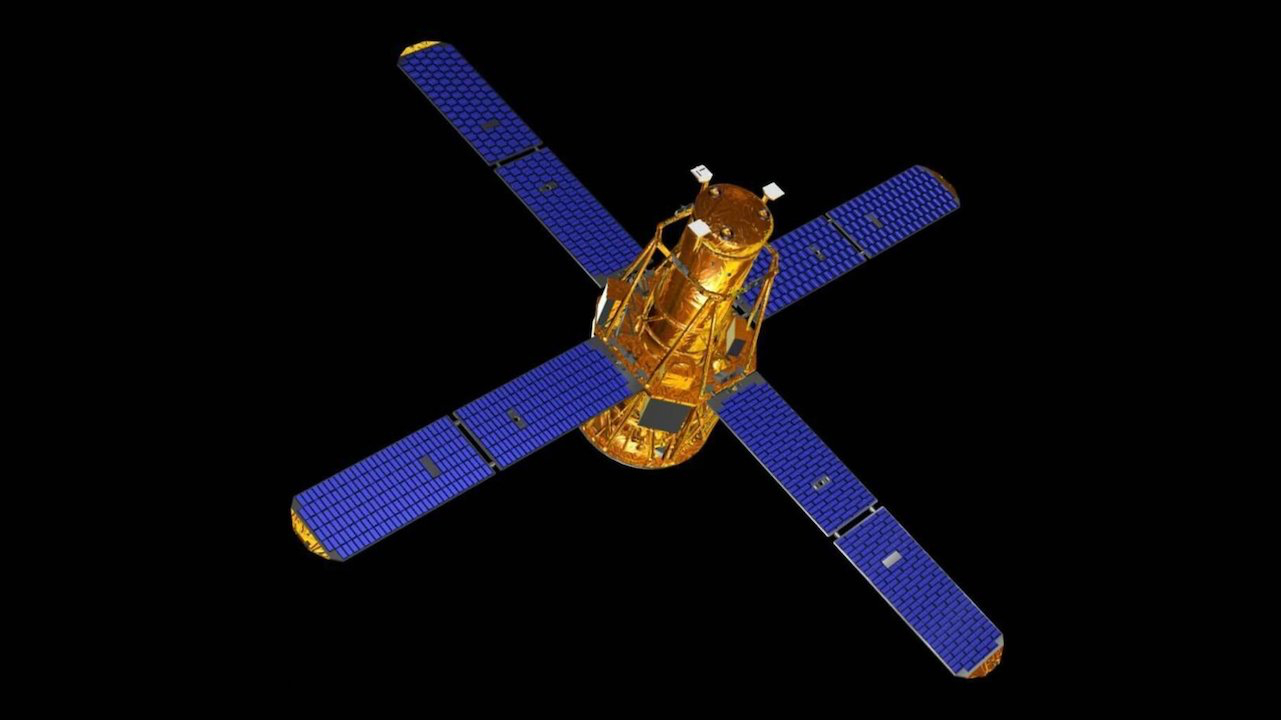
 Credit: NASA
Credit: NASA
The Return of RHESSI
Of all the damage which may come to earth from the cosmos, from killer asteroids to deadly supernova explosions, solar flares are perhaps the likeliest event to impact our civilization. Solar flares are caused by the sudden release of large amounts of electromagnetic energy from the tangled solar magnetic field, producing enormous amounts of dangerous high-energy radiation along with ultrafast, energetic cosmic rays. Thanks to the protection of the earth's atmosphere (which blocks most of the high-energy radiation from reaching the surface) and the earth's magnetic field (which deflects the electrically-charged solar cosmic rays), the possibility that a large solar flare could do serious damage to life on the earth's surface is extremely low. But our interconnected civilization could be brought to its knees by a solar flare, which could do serious harm to our electronically-dependent communications networks, perhaps even causing an "internet apocalypse", lasting days, weeks, or even longer. Keeping an eye on the Sun's erratic, high-energy behavior was the job of the Reuven Ramaty High Energy Solar Spectroscopic Imager, or RHESSI. RHESSI, pictured above, observed the Sun from orbit around the earth, and during its observing lifetime measured dangerous high energy X-ray and gamma-ray emission from more than 100,000 solar flares. The imaging data from RHESSI provided key information on the location and energetics of solar flares, and clues to how these flares fire cosmic rays into the solar system. RHESSI documented the enormous range of solar storms, from tiny "nano-flares" to extreme superflares tens of thousands of times more explosive. Data from RHESSI was even used by scientists to better determine the Sun's geometric shape. After about 16 years in orbit, communication issues with RHESSI caused NASA to decommission the satellite in 2018. The satellite remained in orbit for another 5 years, until atmospheric drag caused the orbit to decay. Its job well done, RHESSI fell harmlessly to earth over the Sahara desert on Wednesday, April 19, 2023.
Published: April 24, 2023
<
HEA Dictionary ● Archive
● Search HEAPOW
● Other Languages
● HEAPOW on Facebook
● Download all Images
● Education ● HEAD
>

Each week the HEASARC
brings you new, exciting and beautiful images from X-ray and Gamma ray
astronomy. Check back each week and be sure to check out the HEAPOW archive!
Page Author: Dr. Michael F. Corcoran
Last modified Tuesday, 27-Feb-2024 10:13:29 EST


